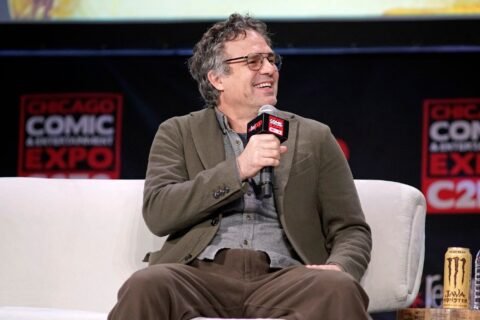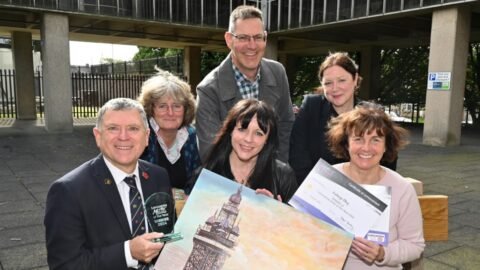Artists are essential to technological advancement, and investment in them should reflect their vital role, a new report from the British Council argues.
‘Why Technology Needs Artists: 40 International Perspectives’ includes input from research heads at Adobe, Google and South Africa’s Lelapa AI, as well as UK arts organisations such as Serpentine and FACT.
A range of UK and international artists also contribute to the 140-page report, providing insights into how they have used and developed technologies through their work.
Hannah Andrews, the British Council’s director of digital innovation, said the report demonstrates how artists are “transforming” the technology they use by “creating new tools, demystifying complex concepts, and ensuring diverse voices shape our digital future”.
She said: “This practice relies on a rich cultural and creative ecosystem which, both nationally and internationally, is an incredibly powerful asset; a network that is capable of not only advancing technology, but doing so from a place of awareness, sensitivity and cultural nuance.”
Andrews added that it was important to “invest in this network as part of shaping a representative, sustainable future”.
‘The world’s least funded AI think-tank’
A key area explored in the report is how artists are interacting with AI in their work, and in the process, developing ways to govern the use of data that protects ownership and promotes ethical standards.
The artist duo Mat Dryhurst and Holly Herndon discuss their Serpentine Arts Technologies commission, The Call, which worked with a collectively owned, first-of-its-kind choral AI model and dataset.
The governance framework they have developed, the Data Trust Experiment, allows rights holders, who in this case are choristers, a way to collectively determine how the AI model trained on their voices will be used, through an elected ‘data trustee’.
Interviewed in the report, the pair said: “Artistic practice offers a relatively safe space in which to experiment in, before contemplating collective AI governance in higher-risk contexts such as health data.
“The process is equally thrilling and alienating, as on top of the pressures of producing art for a living, we are running the world’s least funded AI think-tank from our kitchen.”
Foundational to innovation
Laura Herman, head of AI research at Adobe, describes in the report how engaging with artists is “foundational to our innovation”.
“Through my team’s research, we’ve seen how creative practitioners push the boundaries of what our tools can do, challenge assumptions embedded within them and often repurpose them in ways we could not have anticipated,” she writes.
“This is not only a source of inspiration, it is a necessary mode of critique and direction-setting for our development teams.”
Citing Adobe’s involvement in the Inclusive AI Lab – described as ‘a global consortium dedicated to fostering collaboration between technologists, ethicists and creatives to build equitable AI systems’ – Herman highlights the role of artists in ensuring that the vast datasets that generative AI is trained on do not exclude or underrepresent marginalised histories and practices.
“Artists – particularly those working across non-Western traditions, disabled communities or queer and diasporic lineages – hold expertise that is critical to identifying these absences and reimagining what inclusion can look like.
“Ultimately, I believe that the future of responsible, human-centred AI lies in sustained, equitable collaboration between artists and technologists.”
New conceptual challenges
Also featured in the report, Germany’s LAS Art Foundation discusses its work with Turner Prize-winning artist Laure Prouvost for her large-scale installation ‘We Felt a Star Dying’, shown in Berlin earlier this year.
Prouvost collaborated with physicist Hartmut Neven of Google Quantum AI Lab and philosopher Tobias Rees, developing a generative AI model based on quantum noise extracted from Google’s advanced quantum processor.
Prouvost’s involvement “led the model’s developers to consider conceptual and aesthetic challenges they hadn’t previously encountered”.
Writing in the report’s foreword, British Council’s director of arts, Ruth Mackenzie, said that innovation led by artists, cultural organisations, and creative industries “pushes technologies forward”.
She continued: “Artist-led innovation also reorients technologies towards people, resists bias, prioritises sustainability, creates public engagement, and decentralises the tools that are transforming our world.”





